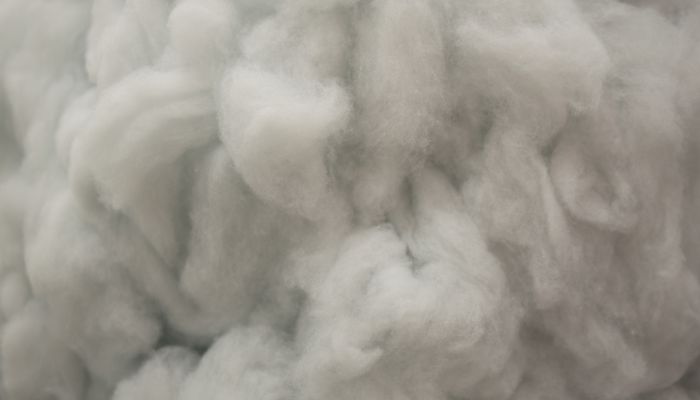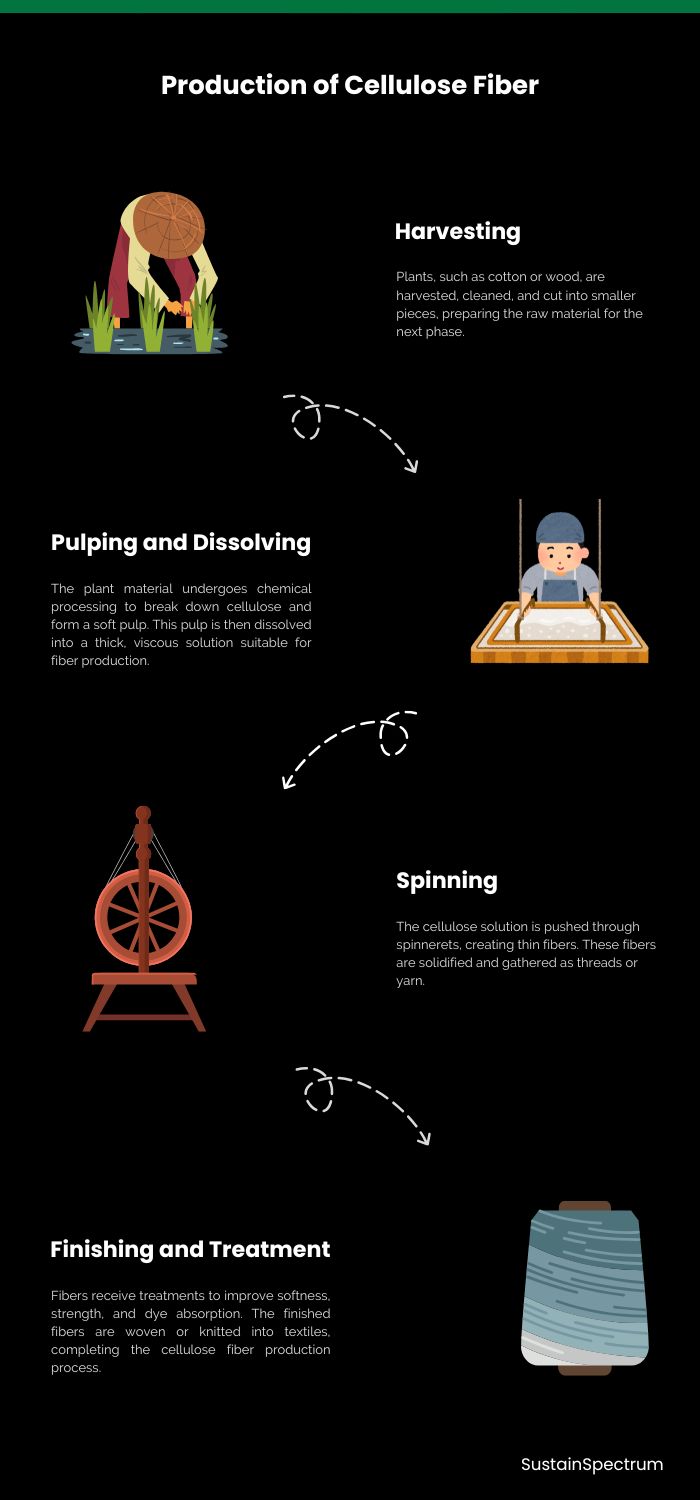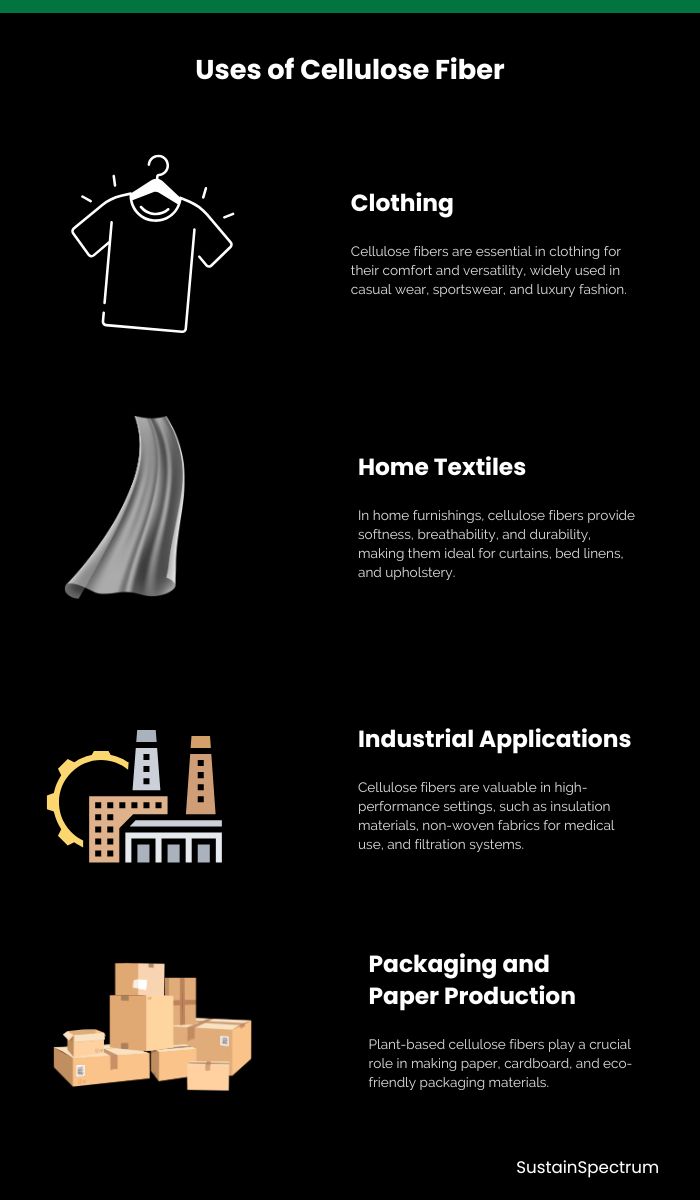Cellulose fiber is a natural fiber obtained from the cell walls of plants. Cellulose, a complex carbohydrate, forms the structural framework of plants, and its fiber can be extracted from a variety of sources, including wood pulp, cotton, bamboo, and other plant-based materials.
Types of Cellulose Fiber
| Type | Description | Common Uses |
|---|---|---|
| Cotton | Soft, breathable, and highly absorbent natural cellulose fiber from cotton plants | Apparel, towels, bedding |
| Rayon | Semi-synthetic fiber made by chemically processing wood pulp | Clothing, home textiles |
| Lyocell | Environmentally friendly regenerated fiber made from wood pulp, using a closed-loop process | High-quality apparel, bedding, home textiles |
| Bamboo Fiber | Often chemically processed into rayon; can be naturally spun as well | Activewear, socks, towels |
| Modal | A variant of rayon made with beech tree pulp, known for its strength and softness | Underwear, loungewear, sheets |
| Acetate | Manufactured from wood pulp, often used as a silk substitute with a glossy finish | Formalwear, linings, home décor |
Properties of Cellulose Fiber

- Natural and Eco-Friendly: Derived from natural plant sources, cellulose fibers are biodegradable and renewable, offering a sustainable alternative to synthetic fibers.
- Breathability and Comfort: These fibers are breathable and absorbent, quickly evaporating moisture, making them suitable for warm-weather clothing and activewear.
- Strength and Durability: Lyocell and modal fibers are highly durable, while rayon fibers tend to be more delicate, particularly when wet.
- Dye Affinity: Cellulose fibers effectively absorb dyes, enabling vibrant colors in textiles, crucial for fashion applications.
- Heat and Moisture Regulation: The high absorbency of these fibers aids in regulating body temperature, ensuring comfort across various climates.
Comparison of Cellulose Fibers
| Fiber Type | Softness | Strength | Moisture Absorption | Eco-Friendliness |
|---|---|---|---|---|
| Cotton | High | Moderate | High | High |
| Rayon | Very High | Low | Moderate | Moderate |
| Lyocell | Very High | High | Very High | Very High |
| Modal | Very High | High | High | High |
| Bamboo | High | Moderate | High | Moderate to High |
Production of Cellulose Fiber

Workers first harvest plants like cotton or trees (for wood pulp). They process natural cellulose fibers, such as cotton, directly, while wood-based fibers require pulping. In this pulping process, materials like rayon, lyocell, and bamboo go through chemical treatment to break down the plant’s cellulose, making it easier to spin into fiber.
After pulping, they extrude the pulp through fine holes called spinnerets, forming fibers. These fibers are then processed into thread or yarn. Finally, they treat the fibers to enhance properties like softness, durability, or dye absorption and prepare them for weaving or knitting in textile production.
Uses of Cellulose Fiber

Cellulose fibers play a key role in clothing due to their comfort and versatility. Cotton, rayon, and lyocell are popular choices for casual wear, sportswear, and luxury fashion.
In home furnishings, cellulose fibers bring softness, breathability, and durability to items like curtains, bed linens, and upholstery. They also serve high-performance purposes in industry, used for insulation materials, medical non-woven fabrics, and filtration systems.
Additionally, plant-based cellulose fiber is vital in producing paper, cardboard, and eco-friendly packaging materials.
Sustainability of Cellulose Fiber
Cellulose fibers are derived from renewable resources like trees, bamboo, and cotton plants. They are biodegradable, reducing landfill waste. Unlike synthetic fibers like polyester, cellulose fibers are not petroleum-based, lowering their environmental impact.
Sustainable Production Methods
| Fiber Type | Sustainability Measures | Environmental Impact |
|---|---|---|
| Lyocell | Closed-loop solvent process with minimal waste | Very low |
| Cotton | Can be grown organically; however, high water and pesticide use | Moderate to high, depending on farming method |
| Bamboo | Naturally regenerative; often involves chemical processing | Moderate |
| Rayon | Conventional process is polluting, but newer eco-friendly methods are emerging | Moderate to high |
Challenges and Innovations
Some cellulose fibers, like rayon, rely on toxic chemicals in traditional processing, though newer, more sustainable methods are being developed. Sourcing from wood pulp may lead to deforestation unless sustainably managed.
Advantages and Disadvantages
| Advantages | Disadvantages |
|---|---|
| Soft, breathable, and comfortable | Some types can be delicate (e.g., rayon) |
| High absorbency and moisture-wicking | Chemical processing may impact the environment |
| Biodegradable and environmentally friendly | Vulnerable to shrinkage |
| Versatile for various applications | Sensitive to certain chemicals and high heat |
The Future of Cellulose Fiber
As consumers and manufacturers prioritize sustainability, cellulose fibers are increasingly in demand. Innovations in processing methods, like the closed-loop lyocell production, are setting new standards for eco-friendly manufacturing. Emerging plant sources, such as algae and agricultural waste, are also being explored as sustainable alternatives for cellulose fiber production.
